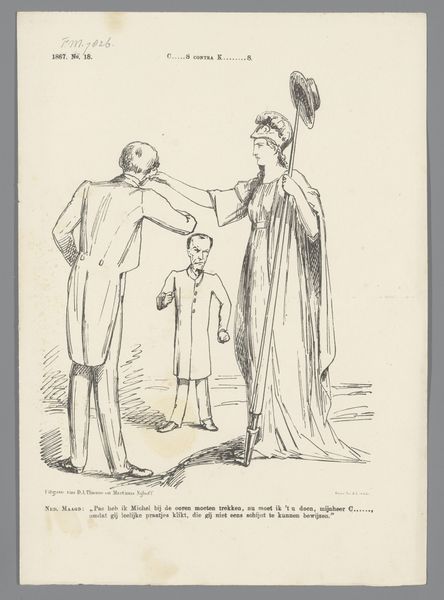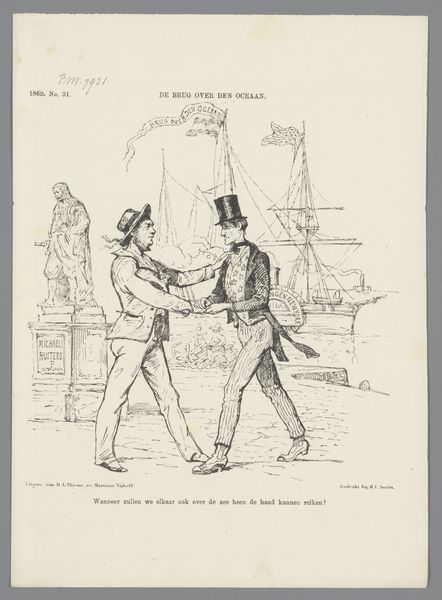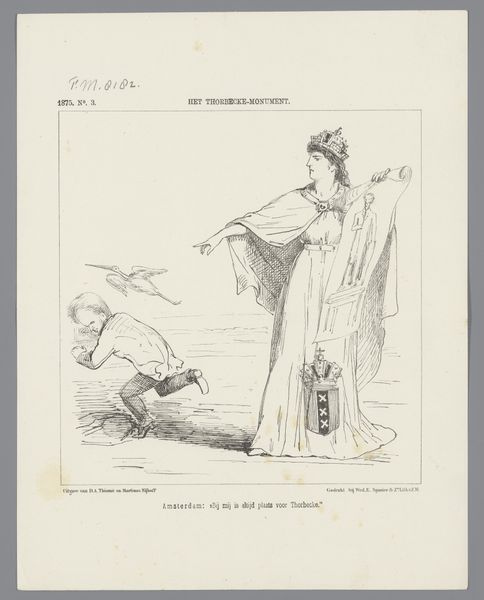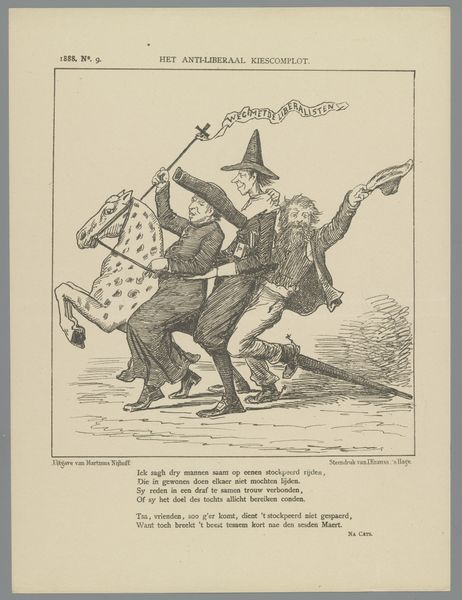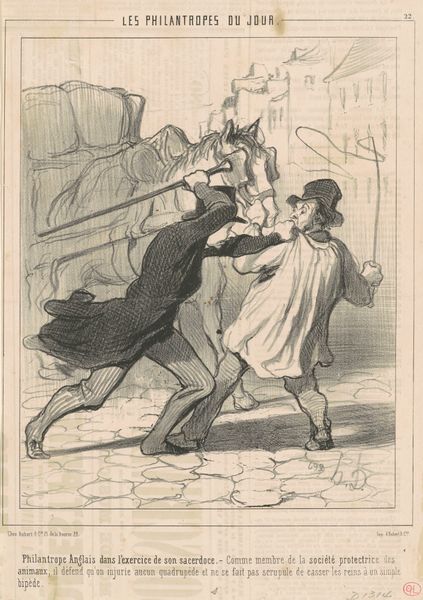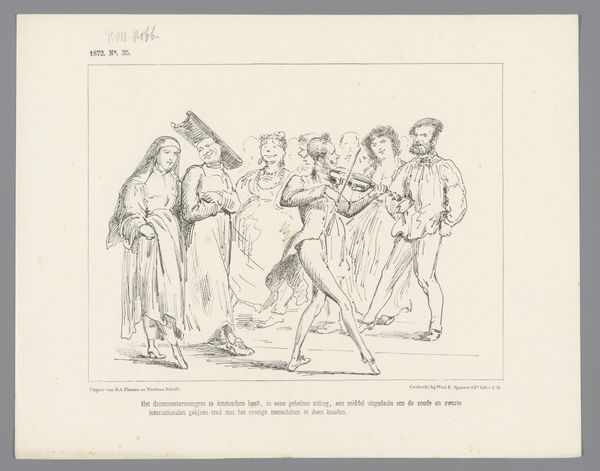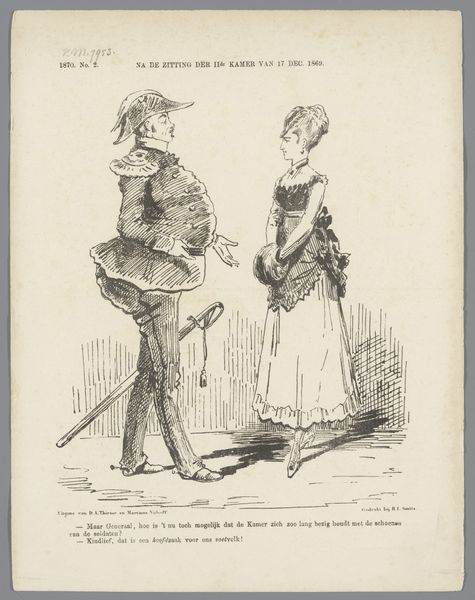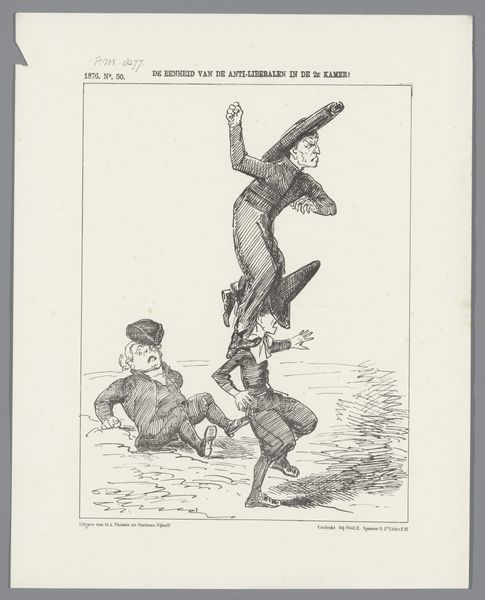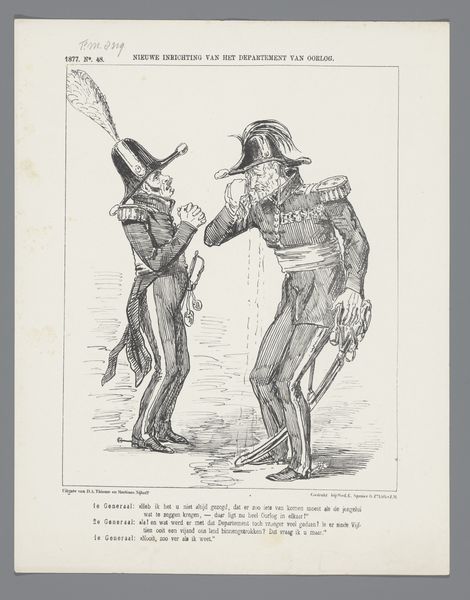
drawing, pen
#
drawing
#
narrative-art
#
caricature
#
pen
Dimensions: height 275 mm, width 215 mm
Copyright: Rijks Museum: Open Domain
Editor: This is a drawing from 1867 entitled "Spotprent over de onwelwillende toon in Duitse bladen, 1867," made with pen by Johan Michaël Schmidt Crans. It features two figures rendered with very precise linework, creating a tense interaction between the characters. How should we understand this tense dynamic? Curator: This piece, titled "De Duitsche Michel tegen Nederland" or "The German Michel against the Netherlands," speaks volumes about 19th-century nationalism and the often-fraught relationship between these two countries. It uses caricature, a common tool in political cartoons, to portray these nations as individuals embodying specific national traits. What do you make of how the artist has depicted the figures? Editor: The figure representing Germany seems frantic, even cowardly, while the Dutch figure stands tall and reproachful. Does that suggest anything about their respective power dynamics at the time? Curator: Precisely. Consider the historical context. In the 1860s, Prussia, soon to become part of a unified Germany, was growing in power. The Netherlands, a smaller nation, felt the pressure. This print is not just an isolated image but part of a larger visual discourse in which the Netherlands articulated and defended its national identity. The artist is weighing in on this cultural conversation and inviting a reaction from their viewing public. Where might this cartoon have been displayed? Editor: Perhaps it was distributed widely in print publications? How do these political cartoons shape national sentiment and contribute to the public sphere? Curator: Exactly. They offer accessible, often humorous, commentary on complex political issues. This image served as propaganda and engaged people in broader political debates about national identity, sovereignty, and the relationship between nations. So, the gallery would contextualize its role within 19th-century visual culture, the history of political satire, and its relationship to larger socio-political forces. Editor: That helps me understand it on a deeper level, considering its historical and social impact, rather than just seeing it as a drawing of two characters. Thanks. Curator: You're welcome. Thinking about how art intervenes in cultural dialogues expands our appreciation beyond just aesthetics and skill.
Comments
No comments
Be the first to comment and join the conversation on the ultimate creative platform.
